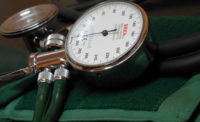Healthcare providers can use cardiovascular risk assessment calculators to inform treatment decisions and work with patients on healthy habits. For example, a 53-year-old woman might find out through her doctor that her heart age is 68 because she smokes and has uncontrolled high blood pressure. Her doctor could then talk with her about finding a quit-smoking program that is right for her, and about life-style changes and medications that would put her in charge of her blood pressure.
U.S. adults can learn their own heart age and how to improve it. This could include quitting smoking or lowering blood pressure through eating a healthier diet, taking appropriate medication, or exercising more. State and local health departments can help by promoting healthier living spaces, such as tobacco-free areas, more access to healthy food options, and safe walking paths.
“Because so many U.S. adults don’t understand their cardiovascular disease risk, they are missing out on early opportunities to prevent future heart attacks or strokes,” said Barbara A. Bowman, Ph.D., director of CDC’s Division for Heart Disease and Stroke Prevention. “About three in four heart attacks and strokes are due to risk factors that increase heart age, so it’s important to continue focusing on efforts to improve heart health and increase access to early and affordable detection and treatment resources nationwide.”
For more information, visit http://www.cdc.gov/heartdisease and http://www.cdc.gov/stroke. Visit millionhearts.hhs.gov to learn about Million Hearts, a national initiative to prevent 1 million heart attacks and strokes by 2017.



